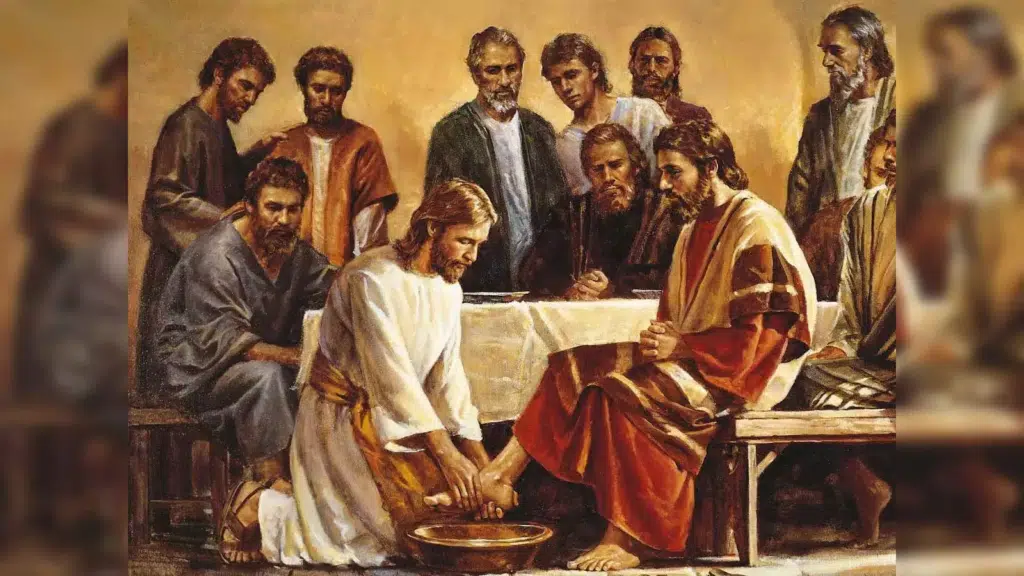
The Significance Of Maundy Thursday
This week is the most spiritual week of the year for Christians, and with it comes a rollercoaster of emotions. The week begins with Palm Sunday, when we honor Jesus’s triumphant arrival in Jerusalem. On this day, palm branches were laid before him. It is also the day when he cleansed the temple by driving out those who were buying and selling in God’s house, overturning the tables of the money changers and the cages of those who sold doves.
The days following Palm Sunday are known as Holy Monday and Holy Tuesday. Some people refer to Tuesday as “Fig Tuesday” because of the parable in which Jesus curses a fig tree that bears no fruit. After Jesus cleanses the temple, the disciples discover the next morning that the fig tree has withered and died. This serves as a metaphor, suggesting that the temple is also cursed and will ultimately wither, just like the fig tree, due to its failure to produce the fruit of righteousness.
Holy Wednesday, also known as “Spy Wednesday,” marks the day Judas arranged to betray Jesus with the chief priests. This act of deceit for thirty pieces of silver ultimately leads to the crucifixion of Jesus.
Many overlook Maundy Thursday, much like the first three days of Holy Week. Unlike Good Friday, which is well-known and associated with the story of Jesus’ death, Maundy Thursday is a significant and profound day that marks the origins of sacred rituals and the beginning of the sorrow stemming from Judas’s betrayal. This day commemorates Jesus’ Last Supper with his disciples and serves as a reminder of the importance of humility, selflessness, and serving others.
The word “Maundy” originates from the Latin word “mandatum,” which means “commandment.” This day is named after Jesus’ commandment to his disciples to love one another. Maundy Thursday demonstrates the importance of humility and service by remembering Jesus washing his disciples’ feet. Many Christian groups have imitated this action by holding a foot-washing rite on this day.
Maundy Thursday marks the beginning of God’s New Testament, emphasizing the command to love one another as He has loved us. This day reminds us of the importance of living a life of service, just as Jesus did during His time on earth. It is also a time for reflection and a call to action for Christians worldwide to embody the values of their faith and follow in Jesus’ footsteps.
The Thursday before Easter, while named after the act of service, holds great significance in Christianity because it commemorates the establishment of the Eucharist, or Communion. This ritual honors Jesus’s sacrifice and represents the New Covenant. During Communion, the breaking of bread symbolizes Jesus’s body, while the drinking of wine represents his blood—both of which were given as a sacrifice for all sins committed, past and future, until the end of time.
After that final dinner, Jesus went to the Garden of Gethsemane to pray. The deep anguish and sorrow He felt were completely understandable. Being God, Jesus was fully aware of everything that was about to happen to Him. He knew in intricate detail the events that would unfold after being betrayed by one of His own disciples. He was aware that He was about to face several trials, during which all the witnesses against Him would lie. He understood that many who had hailed Him as the Messiah just days earlier would now be shouting for His crucifixion.
Jesus was aware that He would be flogged nearly to the point of death before the metal spikes were driven into His flesh. He recognized the prophetic words of Isaiah, spoken seven centuries earlier, which foretold that He would be beaten so severely that He would be “disfigured beyond that of any man” and “beyond human likeness.” Undoubtedly, this foreknowledge and prophecies contributed to His great anguish and sorrow, causing Him to sweat drops of blood.
Crucifixion was regarded as the most painful and torturous method of execution ever created, reserved for the most despised and wicked individuals. The pain it caused was so horrific that a specific word was created to convey it—“excruciating,” which literally means “from the cross.”
From the moment of His arrest in the garden until He declared, “It is finished,” Scripture records only one occasion when Jesus “cried out in a loud voice.” As our sinless Savior carried the weight of the world’s sins, He cried out in anguish, “Eloi, Eloi, lama sabachthani?” which means, “My God, My God, why have you forsaken me?” The spiritual pain He experienced undoubtedly far exceeded the intense physical suffering He endured on our behalf.
On Easter Sunday, we celebrate Christ’s resurrection. However, the week leading up to this significant event in the Christian faith is filled with human drama and intricacies. Understanding these elements helps us grasp the depth of what transpired during that fateful and ultimately triumphant week.



